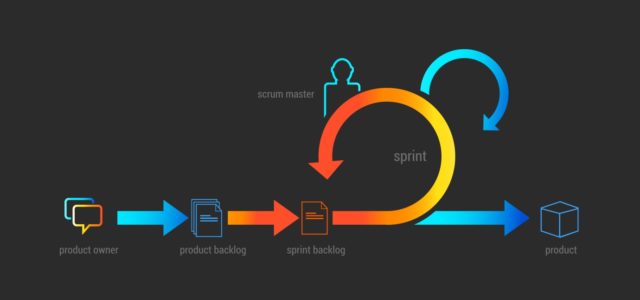Don’t let your silver bullet turn into a white elephant
DMP’s are sophisticated technology platforms, housing a multitude of potential outputs and use cases. There are so many possibilities with the DMP that it can become confusing and difficult to execute upon a single and well defined strategy, as different teams focus on different platform features, outputs, and value propositions.
I can honestly say that I have yet to come across another tech platform which has the potential to turn so quickly from being a marketer’s “silver bullet” into a “white elephant” that is not being fully utilised.
I have spoken about the requirement to establish a clear strategic framework in order to set yourself up for success with the DMP (see full article). The focus of this article will be to identify 5 major value streams, which could be phased in accordance to a brand’s requirements in order to achieve success with the DMP and extract the maximum value output.
Making Data Meaningful
I sometimes talk about DMP’s as data translation engines. DMP’s translate data into meaningful and actionable assets. The five major output streams identified below are all designed to translate data into marketing and communications outcomes and real business value.
1. Unified Audience Building
Collection and management of 1st party data is one of the most cited use cases of the DMP, as advertisers seek better visibility and control over their own data assets in order to support business objectives. This 1st party data is not limited to digital data, but includes offline CRM data, location data, device-level data etc.
The DMP has the power to combine 1st party data with 3rd party data and unify an increasingly fragmented data ecosystem. There are currently dozens of data vendors all of whom aggregate 3rd party data, and all of whom have their own specialities, sources, collection methodologies etc. The DMP acts a single access point to the data ecosystem, unifying multiple 3rd party data assets for use in audience building in combination with 1st party data assets and 2nd party data assets.
2. Generate Persona Reports & Customer Insights
Using audience profiling reporting in combination with mid-flight tracking and campaign feedback to gain a 360° view of an audience composition and understand exactly who your most valuable customers are and who is engaging with you marketing and communications.
Evaluate demographics, interests, in-market propensity, and even TV viewing habits of any audience you build or track using the DMP to inform media planning and activation, content and messaging, product recommendation etc.
3. Central Audience Delivery & Management
In a world of ever increasing walled gardens, the DMP is quickly becoming the last bastion in data and audience portability. A DMP should therefore be centralised as well as media and tech agnostic. It should have no bias in terms of activation/delivery platforms or integrations.
The centralisation of audience creation, management and optimisation provides significant operational efficiencies as well as media efficiencies through holistic cross-platform and cross screen campaign activation. Set an audience up within a central DMP and have that audience delivered simultaneously to all delivery systems, whether that is search, social, email, DSP’s or ad servers. When optimising the audience targeting, optimise it once within the DMP and re-deliver the segment to all activation platforms at the same time.
Through a centralised approach to audience management and activation, you reduce the hours spent in multi-platform optimisation and allow for consistent, transparent audience optimisation as well as having the ability to set global frequency rules and cross platform and cross device storyboarding etc.
4. Mid-Flight Audience Optimisation
Generating campaign feedback loops in order to create a holistic understanding of campaign delivery and audience performance is intrinsic to a DMP. A centralised tracking capability gives marketer’s a much more accurate understanding of metrics such as unique reach and global frequency across devices, platforms and bidding systems, as well as audience and behaviour-level performance against any given KPI.
DMP’s should also support automated campaign optimisation through predictive modelling and machine learning, automatically evaluating unique audience groups in order to create look-a-like and act-a-like audiences and campaign optimisation models to improve campaign efficiency through effective prospecting activities.
5. Content & Creative Personalisation
The DMP should facilitate real-time content and creative personalisation in association with you adserver and content management system/ recommendation engine. The ability to make a real-time call through either the adserver or CMS in order to return all 1st party data as well as 3rd party data associated to an individual user is an incredibly powerful tool in creative and content decisioning.
Even taking a simple execution which presents different content/product recommendations to existing customers vs. new customers can improve overall efficiency, user experience and ultimately optimise the conversion funnel and path to purchase.
A clear strategy and a solid phasing plan
Advertisers have grown to understand and appreciate the value of DMP technology in furthering their marketing and communications strategies, and although the above is not an exhaustive list of stratagems to progress data strategy, it does demonstrate 5 major value propositions of implementing a DMP, and shows where marketers and brands can focus their attention to generate value and positive ROI on the DMP.
When executing on DMP and a new data-driven strategy, brands need to understand that this technology requires long-term planning and realistic expectations on value generation over the short, medium and long-term. Don’t try to “boil the ocean” and execute on all 5 of the above use cases on day 1 of working with a DMP, instead look to create a phasing plan which realises value through achieving discreet objectives and milestones over time.
Article by channel:
Everything you need to know about Digital Transformation
The best articles, news and events direct to your inbox
Read more articles tagged: Featured






